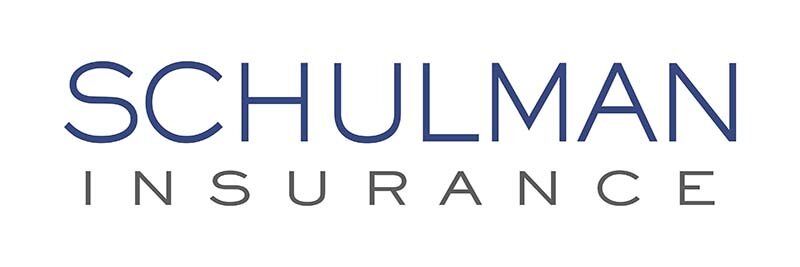DCAP Update and Other Highlights from the ARPA
Along with the COBRA subsidy discussed in the alert issued March 11, 2021, the American Rescue Plan Act of 2021 (“ARPA” or the “Act”) provides the following additional relief:
• For calendar year 2021 only, an increase in the amount of pre-tax salary reduction election for a dependent care assistance plan (“DCAP” or “dependent care FSA”) to $10,500;
• Expansion of tax credits available to employers who voluntarily extend paid sick and family leave under the Families First Coronavirus Response Act (the “FFCRA”) through September 30, 2021; and
• An increase in premium tax credits for calendar year 2021 and 2022 for coverage purchased in the Marketplace.
While the COBRA subsidy is the most significant requirement for group health plans pursuant to the ARPA, this additional relief is discussed in more detail below.
Dependent Care Assistance Plan Relief
For 2021 only, the maximum pre-tax contribution limit to a DCAP has been increased from $5,000 to $10,500 (and from $2,500 to $5,250 for married filing individual returns).
Employers may amend their cafeteria plans to increase the pre-tax salary reduction to this higher limit for 2021 only. DCAP contributions are tracked on a calendar year. An amendment reflecting this change must be adopted not later than the last day of the plan year to which the amendment is effective (for a calendar year plan, by December 31, 2021). This change appears to be optional, rather than mandatory.
This change does not affect the ability for a plan to offer an unlimited carryover or grace period from the DCAP that ended in 2020 to 2021.
Voluntary Extension of Tax Credits for Emergency Paid Sick and Family Leave Through September 31, 2021
As of December 31, 2020, employers are no longer required to provide emergency paid sick leave and emergency family and medical leave. While the Consolidated Appropriations Act of 2021 did not extend the requirement to offer FFCRA emergency leave beyond December 31, 2020, it did extend the availability of tax credits for employers voluntarily providing this paid sick leave and expanded family and medical leave through March 31, 2021.
ARPA again extends the availability of these tax credits for up to an additional 10 days of paid sick leave taken between April 1, 2021 and September 31, 2021. The additional tax credits are allowed even if an employer obtained the maximum amount of tax credits and an employee previously exhausted paid sick leave or family leave days allowed under the FFCRA prior to April 1, 2021. Providing such leave remains voluntary as ARPA did not reinstate the required leave under FFCRA.
ARPA adds two additional reasons to the original six reasons where emergency sick leave may be provided by employers where:
• the employee is seeking or awaiting the results of a diagnostic test for, or a medical diagnosis of, COVID-19 and such employee has been exposed to COVID-19 or the employee’s employer has requested such test or diagnosis; and
• the employee is obtaining immunization related to COVID-19 or recovering from any injury, disability, illness, or condition related to such immunization after medical diagnosis thereof.
Employers may now receive tax credits for all the original reasons plus the above additional two reasons for taking leave.
Under ARPA, these tax credits are not available to employers that discriminate in favor of highly compensated employees, full-time employees or employees on the basis of employment tenure in providing the leave. on the basis of tenure.
Where the tax credit is claimed for family leave, ARPA increases the aggregate amount of wages that may be claimed from $10,000 to $12,000, removing the two-week waiting period on the emergency FMLA leave. It is important to note that only private sector employers with fewer than 500 employees are eligible for these tax credits.
Increased Marketplace Subsidies
ARPA increases the premium subsidies that certain individuals who purchase health insurance coverage through the Marketplace exchange will receive and makes certain individuals newly eligible for subsidies for 2021 and 2022. Individuals who make more than 400% of the Federal Poverty Level (the “FPL”) will have a cap on their premium costs of 8.5% of their household income. Ordinarily, individuals who make more than 400% of the FPL do not qualify for premium assistance. Given the expansion of subsidies available to individuals above 400% of FPL, some large employers (50 or more full-time employees) may see increased exposure to penalty assessments under the ACA’s employer mandate to the extent coverage is not offered to full-time employees or is not affordable and full-time employees receive subsidies in the Marketplace to purchase coverage.
Employer Next Steps
• Employers should consider whether they want to increase the maximum pre-tax contribution limit to dependent care FSAs and, if so, must amend their cafeteria plans accordingly.
• Employers should determine whether it makes sense to voluntarily provide paid sick leave and paid family medical leave to continue to receive tax credits and should review and revise their policies. Remember that state laws may offer additional leave protections and should be reviewed.
• Large employers subject to the ACA’s employer mandate should be aware that more of their employees may be eligible for subsidies in the Marketplace for 2021 and 2022. This may increase the risk of penalty assessment when the employer is not offering group health plan coverage to at least 95% of fulltime employees, offering unaffordable coverage or excluding up to 5% of full-time employees from an offer of coverage. Employers should continue to regularly review their exposure to penalties under the ACA.

